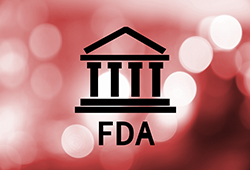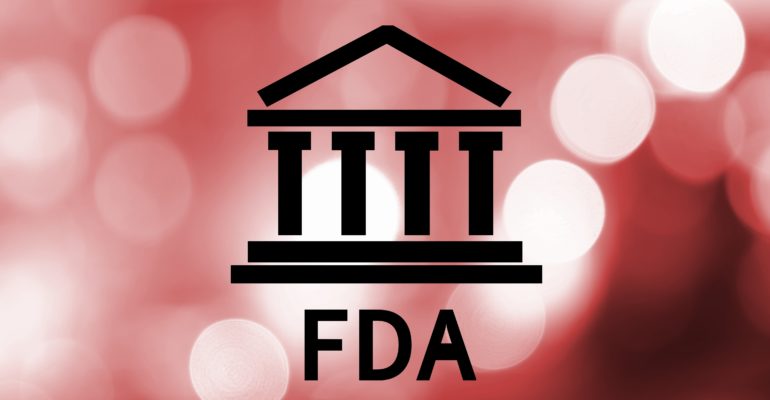 Today, the U.S. FDA released its Biosimilar Action Plan (BAP), which outlines the Administration’s proposed next steps to help reduce the costs of healthcare by expediting the development of robust biosimilar competition and market penetration, while encouraging innovation and maintaining incentives for investing in future products. In remarks delivered at the Brookings Institute in conjunction with the BAP’s rollout, FDA Commissioner Scott Gottlieb, M.D., explained that the BAP is “an important piece of the Administration’s bold Blueprint to Lower Drug Prices and demonstrates the progress being made against the deliverables the President laid out.”
Today, the U.S. FDA released its Biosimilar Action Plan (BAP), which outlines the Administration’s proposed next steps to help reduce the costs of healthcare by expediting the development of robust biosimilar competition and market penetration, while encouraging innovation and maintaining incentives for investing in future products. In remarks delivered at the Brookings Institute in conjunction with the BAP’s rollout, FDA Commissioner Scott Gottlieb, M.D., explained that the BAP is “an important piece of the Administration’s bold Blueprint to Lower Drug Prices and demonstrates the progress being made against the deliverables the President laid out.”
The BAP lays out the following eleven “key actions” that FDA will be taking:
- Developing and implementing new FDA review tools, such as standardized review templates that are tailored to marketing applications for biosimilar and interchangeable products, to improve the efficiency of FDA review and enhance the public information about FDA’s evaluation of these products.
- Creating information resources and development tools for sponsors of biosimilar applications. This includes tools such as in silico models and simulations to correlate pharmacokinetic and pharmacodynamics responses with clinical performance. Such tools can make biosimilar drug development more efficient.
- Enhancing the Purple Book to include more information about approved biological products, including information relating to reference product exclusivity determinations.
- Actively exploring the potential for entering into new data sharing agreements with foreign regulators to facilitate the increased use of non-U.S.-licensed comparator products in certain studies to support a biosimilar application.
- Establishing a new Office of Therapeutic Biologics and Biosimilars (OTBB) to improve coordination and support of activities under the Biosimilar User Fee Act (BsUFA) program, accelerate responses to stakeholders and support efficient operations and policy development.
- Building on the FDA’s Biosimilar Education and Outreach Campaign, continue providing critical education to health care professionals, including releasing a series of videos that explain key concepts about biosimilar and interchangeable products.
- Publishing final or revised draft guidance on biosimilar product labeling to assist sponsors in determining what data and information should be included in the labeling.
- Providing additional clarity for product developers on demonstrating interchangeability, including by publishing final or revised draft guidance.
- Providing additional clarity for product developers on demonstrating interchangeability, including by publishing structure and function to support a demonstration of biosimilarity, including by publishing revised draft guidance on the use of data analysis methods, including statistical approaches.
- Providing additional support for product developers regarding product quality and manufacturing process, including by identifying physical product quality attributes that are most critical to evaluate, and by exploring ways to reduce the number of lots of the reference product required for testing.
- Engaging in a public dialogue through a Part 15 hearing and opening a docket to request additional information from the public on what additional policy steps the FDA should consider as we seek to enhance our biosimilar program.
During his comments on the BAP, Dr. Gottlieb raised concerns about the state of U.S. biosimilar competition, which he called “for the most part, anemic,” due to “rebate schemes,” “long-dated contracts … [that] lock up payors in multi-year contracts right on the eve of biosimilar entry,” and “patent thickets.”
While recognizing that some of the issues he was discussing were outside of the FDA’s purview, Dr. Gottlieb had some harsh words for any company that could be accused of trying to stave off biosimilar competition using unfair practices. He recalled that it took about two decades after enactment of the Hatch-Waxman Act to develop a robust generic drug market, but emphasized the urgency of developing biosimilar competition due to the costs of healthcare today. Dr. Gottlieb stated: “Sometimes it feels as if we’re seeing the biosimilars version of ‘Groundhog Day,’ with brand drug makers replaying many of the same tactics, and all of us being too susceptible to many of the same misconceptions about biosimilars’ safety and efficacy relative to originator biologics. We’re falling into some of the same doubts and policy constraints that were used to deter competition from generics in the years after the Hatch Waxman Act. But we’re not going to play regulatory whack-a-mole with companies trying to unfairly delay or derail the entry of biosimilar competitors. We’re not going to wait a decade or more for robust biosimilar competition to emerge.”
Dr. Gottlieb categorized the FDA’s plans into the following four “key strategies” to encourage biosimilar competition and market penetration: (1) “improving the efficiency of the biosimilar and interchangeable product development and approval process”; (2) “maximizing scientific and regulatory clarity for the biosimilar product development community”; (3) “developing effective communications to improve understanding of biosimilars among patients, providers and payors”; and (4) “supporting market competition by reducing gaming of FDA requirements or other attempts to unfairly delay market competition to follow-on products.”

